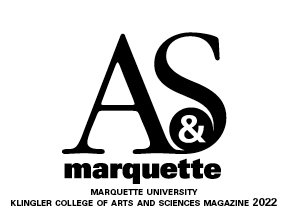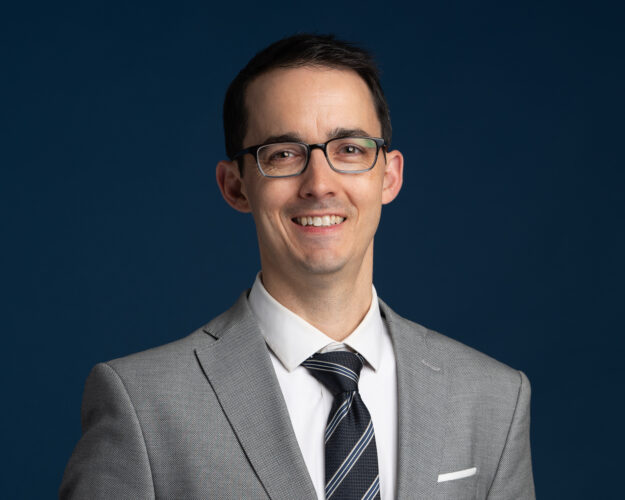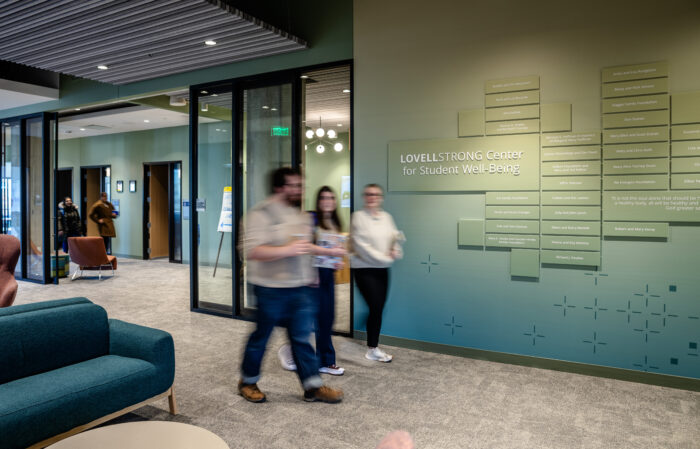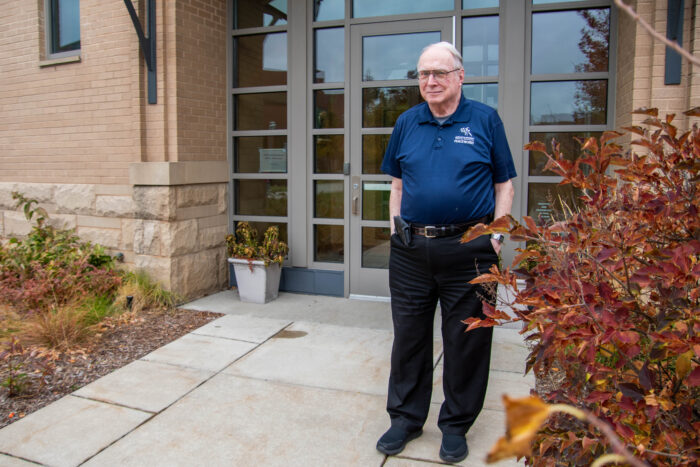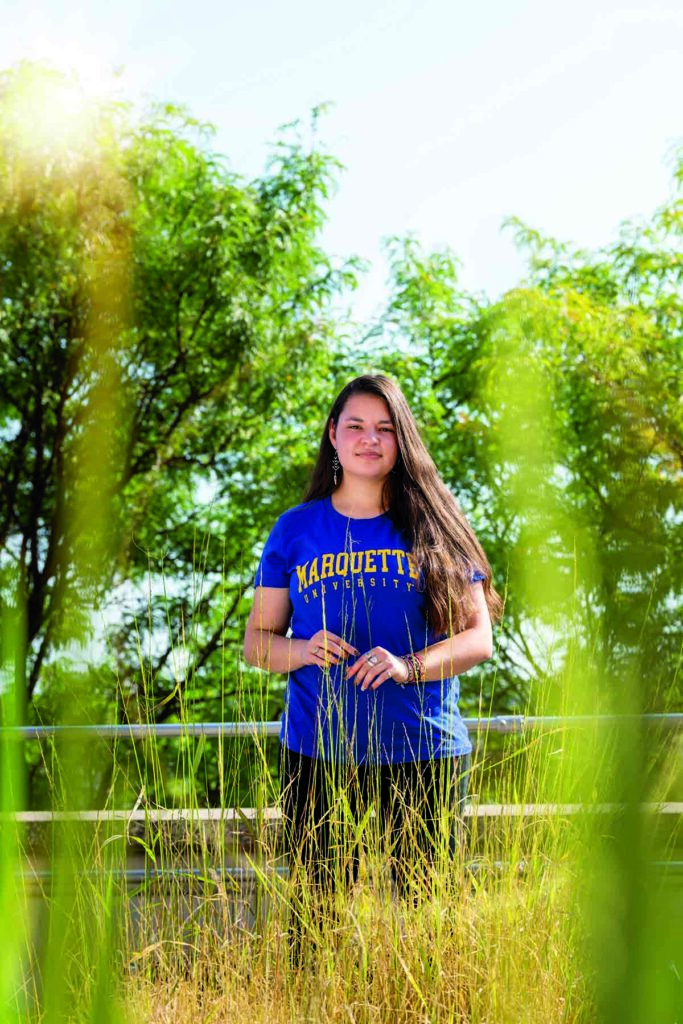
Danielle Barrett was a pre-med biology student in her sophomore year when she learned about Marquette’s new Indigeneity Lab. It was a way to get research experience and build up her resume, she thought. And it meant she could meet other Indigenous students at Marquette — until then, she thought she might be the only one.
Barrett, a member of the Long Hair Clan of the Eastern Band Cherokees, grew up in Texas and Wisconsin with little connection to her heritage. When her Indigeneity Lab application was accepted, she never anticipated just how transformative the experience would be.
“It has meant going from being invisible to being seen, going from uneducated about my culture to being educated,” she says.
In two summer semesters with the lab to study the cultural history and then the science of wild rice, Barrett connected with Indigenous people on and off campus, discovered shared experiences, dug deeper into the history of Indigenous peoples and gained a perspective on her own family’s past. During that time, she was also involved in the Native American Student Association, of which she is now president. Her worldview shifted — and so did her career ambitions.
“I hope to be a pediatrician and in time open my own practice on a reservation,” she says. “It wasn’t always the dream, but in learning new things about the Indigenous community, it has become the dream.”
Multifaceted goals, outcomes
The Indigeneity Lab was launched in 2020 in response to Indigenous students’ requests for more acknowledgment and support. Its purpose is multifaceted: paid, credit-earning research opportunities for Indigenous undergrads; research on topics of relevance to Indigenous communities; partnership and outreach with Wisconsin’s Indigenous communities; and a cross-disciplinary structure encompassing history, science, culture and beyond.
The outgrowth of the lab is equally multifaceted, as its first research projects demonstrate.
For an interactive map-making project, students work with Dr. Bryan Rindfleisch, Grad ’09, associate professor of history and an expert in Native American history. Their goal: collect and edit content for a web-based resource that documents the many connections between Milwaukee and Indigenous communities, both historic and current.
The map, called Indigenize Milwaukee, has received attention from local news outlets, giving students the chance to be interviewed on camera. The students also presented at more academic conferences than Rindfleisch initially hoped for. “It far exceeded my expectations in terms of the exposure that they got at a professional level,” says Rindfleisch. Even more rewarding was working with students as they realized the deep Indigenous roots that existed just around the corner, connecting with their own personal experiences.
In another research project, Dr. Michael Schläppi, professor of biological sciences, is working with Native American students to study the DNA of wild rice in hopes of finding clues that can help it thrive again. Wild rice, once abundant along Milwaukee’s waterways, is considered a sacred grain to the Native communities of Wisconsin. The research requires an approach that respects the tradition alongside the science. Involving Indigenous students makes that possible.
Schläppi describes how one of the Indigeneity Lab student researchers drove hours north to the Menominee Indian Reservation, with hopes of bringing back samples of natural wild rice plants. Respecting the sensitivity of the conversation, the two agreed that the student would visit the reservation without Schläppi. When the student successfully returned with a few of the plants, they began the process of genotyping them — an initial step toward understanding what makes them tick.
Schläppi worked with Barrett this summer to grow wild rice seeds obtained from a Wisconsin nursery in a small 4-by-4-foot rooftop pond outside Schläppi’s lab. They succeeded in getting plants to grow, flower and set seeds, perhaps a first in Milwaukee in decades and a first step to reintroducing the sacred plant back to Milwaukee rivers.
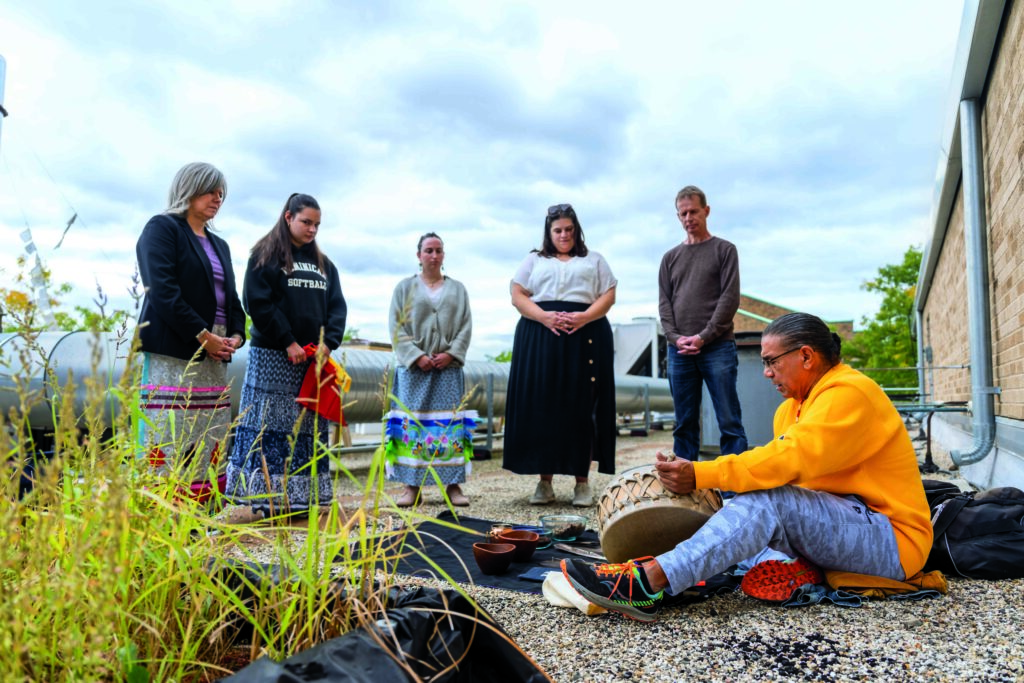
The final lab project is one with timely significance. It is a project that seeks to highlight and contextualize the various documents found in the expansive archival collection from the Bureau of Catholic Indian Missions, or BCIM, one of the organizations that managed boarding schools in the U.S. and Canada from 1880 through the 1980s with the intent to “civilize” Native American children. The records present the BCIM’s view of the assimilation project, so the Indigeneity Lab supplementary website aims to synthesize the context, resources and analysis that help various communities reach a more complete understanding of the history.
Housed in Marquette’s Department of Special Collections and University Archives in Raynor Memorial Libraries, this massive collection of more than 800 boxes was procured in 1977 by historian and then-Marquette professor Rev. Francis Paul Prucha, S.J. The collection will shed light on an educational movement that came under new scrutiny after the discovery in recent years of mass graves at Canadian and U.S. Indian boarding schools run by the government and faith-based organizations — developments that sparked a flurry of public apologies and initiatives, including from Catholic organizations and Pope Francis.
To Indigenous communities, boarding schools are a familiar shared trauma. “I have yet to meet a Native student who doesn’t have boarding school history in their own family history,” says Dr. Samantha Majhor, adviser on the BCIM research project and part of the team that helped conceptualize the lab. An assistant professor of English, Majhor covers the history of boarding schools in classes on Native American literature, and it frequently comes as a shock to non-Native students.
“Part of the boarding school history involved brutally stripping away Native identity,” says Majhor, whose ancestry is Dakota and Assiniboine. Giving Indigenous students the opportunity to research this history is also an opportunity to connect with their identities in ways they couldn’t before, and in an academic setting that validates their own truths. “This is recovery work,” Majhor says. “I think it will be powerful for Native and non-Native audiences.”
Jacqueline Fontaine Schram, Marquette’s director of public affairs and special assistant for Native American affairs, works as a liaison connecting the lab, Indigenous students, and the Milwaukee Indian and tribal communities. She has seen how the lab’s research triggers powerful feelings of identity among the students.
“Some of these students haven’t really examined their Indigenous identity or their connections with issues that tribal nations are concerned with,” says Schram, who is Anishinaabe and a band member of Sagkeeng First Nation in Manitoba, Canada. “And seeing those connection points get soldered through their experience in the lab is such a beautiful thing.”
The power of connection
Because the Indigenous student population at Marquette is small — less than 1 percent of undergraduates enrolled full time in fall 2021 identified as Native American — forging a community can be challenging. Although the lab has no physical home, it’s helping Indigenous students connect with one other in ways its organizers didn’t anticipate.
“We all went into our projects with great zest,” Majhor says, “but we didn’t fully anticipate how meaningful these connections would be for our students.”
“Connection” is a common refrain among the students who participate. “Native students on almost any campus are a small population, and it can be hard to find each other and find that sense of community and home,” Majhor adds. The boarding school project, in particular, surfaces meaningful and sometimes difficult shared experiences.
That’s true for Barrett, who is deeply grateful for finding a community that understands the narratives of her family’s past, is helping her uncover a history she was never taught and is giving her a sense of belonging — all for the first time in her life.
She’s not alone, says Schram. “I think my greatest reward in all of this is seeing students really fly. I have cried with students at the end of their time with the lab because it was such a transformative experience for them.”
